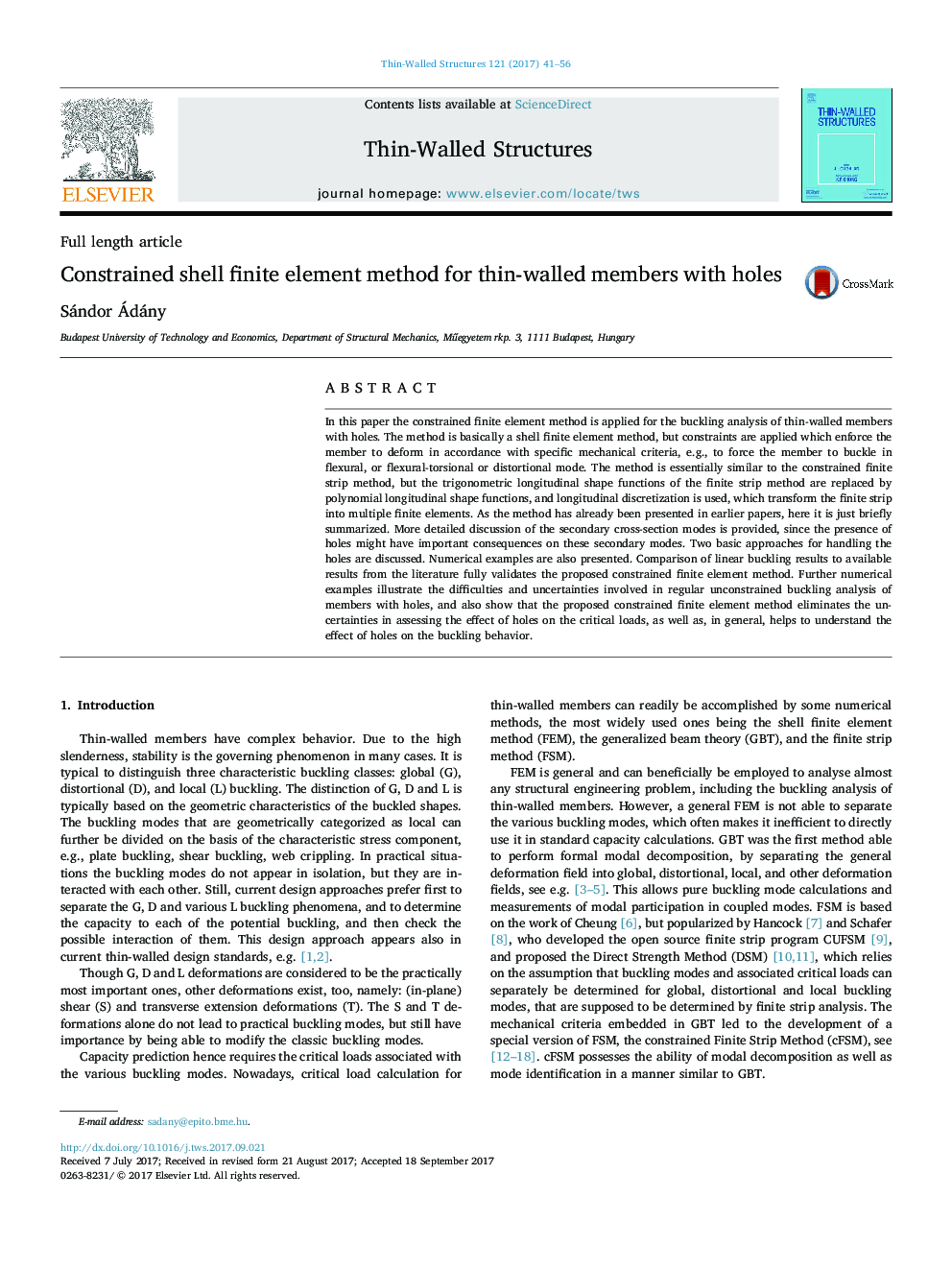| Article ID | Journal | Published Year | Pages | File Type |
|---|---|---|---|---|
| 4928386 | Thin-Walled Structures | 2017 | 16 Pages |
Abstract
In this paper the constrained finite element method is applied for the buckling analysis of thin-walled members with holes. The method is basically a shell finite element method, but constraints are applied which enforce the member to deform in accordance with specific mechanical criteria, e.g., to force the member to buckle in flexural, or flexural-torsional or distortional mode. The method is essentially similar to the constrained finite strip method, but the trigonometric longitudinal shape functions of the finite strip method are replaced by polynomial longitudinal shape functions, and longitudinal discretization is used, which transform the finite strip into multiple finite elements. As the method has already been presented in earlier papers, here it is just briefly summarized. More detailed discussion of the secondary cross-section modes is provided, since the presence of holes might have important consequences on these secondary modes. Two basic approaches for handling the holes are discussed. Numerical examples are also presented. Comparison of linear buckling results to available results from the literature fully validates the proposed constrained finite element method. Further numerical examples illustrate the difficulties and uncertainties involved in regular unconstrained buckling analysis of members with holes, and also show that the proposed constrained finite element method eliminates the uncertainties in assessing the effect of holes on the critical loads, as well as, in general, helps to understand the effect of holes on the buckling behavior.
Related Topics
Physical Sciences and Engineering
Engineering
Civil and Structural Engineering
Authors
Sándor Ádány,
